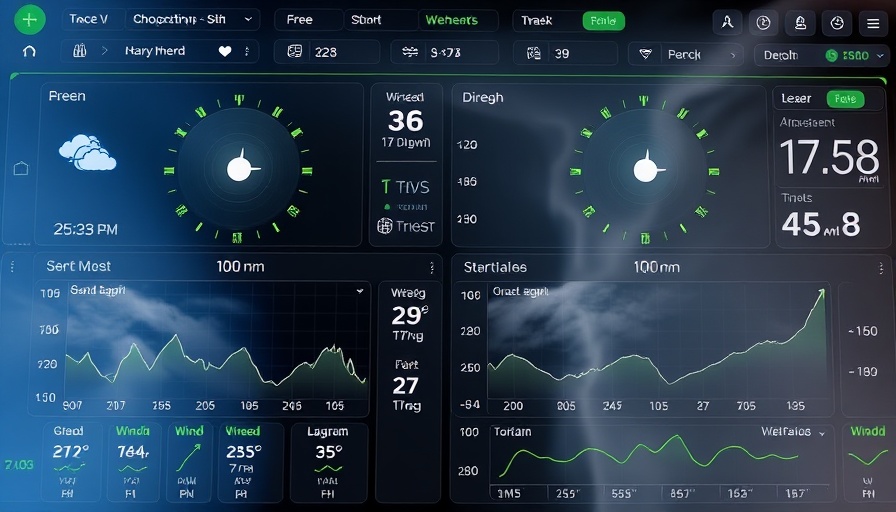
Understanding Atmospheric Gravity Waves and Their Impact on Winds
The winds of the coast, especially around Waddell, can often feel unpredictable. While enthusiasts of kite surfing and windsurfing are familiar with the random gusts and lulls that cause wind graphs to appear jagged, some intriguing patterns emerge that reveal nature's beautifully rhythmic dance. The distinct oscillations captured in wind data on August 4th caught our attention—a smooth up-and-down motion reminiscent of waves, hinting at the presence of atmospheric gravity waves.
The Science Behind Atmospheric Gravity Waves
Atmospheric gravity waves are fascinating phenomena caused by stable air being disturbed, allowing it to rise and then fall, often influenced by geographical features like the Coast Range. As these waves travel through marine layers, they exert their influence on surface winds. When stronger northwesterly ocean winds are present, gravity waves can lead to surges and breaks in wind strength—this means that even when faced with a consistent NW flow, the interplay between various air movements results in gusty and variable winds.
A Closer Look at Wind Fluctuations
As gravity waves pass over the marine layer, they can alter surface pressure, causing fluctuations in wind speed. When winds rise at the wave crest, surface pressures dip, allowing winds to accelerate. Conversely, at the wave trough, wind speed can slow, creating notable lulls. This oscillation is sometimes described as a "synchronicity"—a rhythm that wind observers may interpret as nature's way of delivering hints about local conditions.
How Gravity Waves Affect Our High Desert Lifestyle
For those of us living in the high desert, the effects of these gravity waves can extend beyond the seaside. The dynamic nature of wind can influence local weather patterns here and can even contribute to broader climate issues. As a result, understanding these air movements allows communities to be more resilient when facing changes in the environment we inhabit.
Curiosity Sparks Community Connection
In the heart of the high desert, this phenomenon can be a topic of conversation among neighbors and friends as we explore our unique weather conditions together. Understanding these winds fosters a deeper connection with our surroundings. Whether you're an outdoor enthusiast, a casual observer, or someone invested in local climate issues, having knowledge about atmospheric gravity waves can enliven your appreciation for the world around you.
Preparing for Variable Winds and Local Conditions
As board sports enthusiasts prepare to hit the waves, awareness of atmospheric gravity waves means being attuned to the conditions that affect surface winds. The variability caused by these waves can dictate the timing of your next kite surfing adventure or simply enrich your experience of the great outdoors. With this knowledge, adventurers can embrace the gusty winds while navigating their pursuit of excitement in outdoor activities.
In summary, atmospheric gravity waves are worth paying attention to—they offer intriguing insights into our complex climate system while shaping our engagements with nature. We encourage fellow residents and adventurers alike to explore this enchanting science as they embrace their community and our ever-changing environment.
 Add Row
Add Row  Add
Add 




Write A Comment